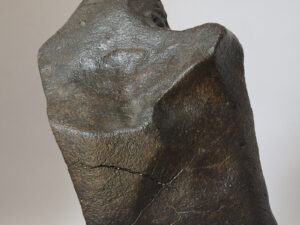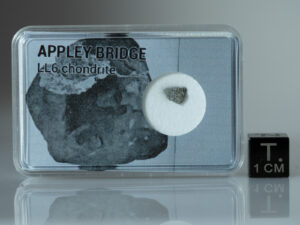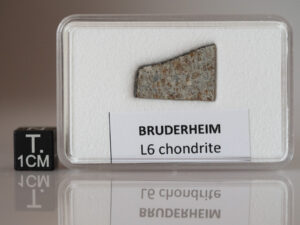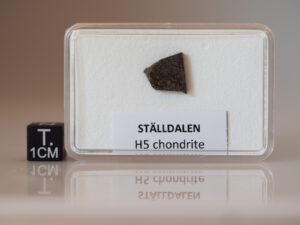Description
A rare swedish meteorite.
Fell, 28 June 1876; 34 kg, 11 stones
After a fireball and detonations, 11 meteoritic stones were recovered (the largest ~12.5 kg). The early literature reports the presence of prominent, but equilibrated olivine and pyroxene (in chondrules, fragments, and grains) accompanied by troilite, Fe-Ni metal, and even some chromite. Subsequent refinements (e.g., specific olivine composition [Fa19]) place Ställdalen as a somewhat brecciated, but otherwise mostly normal ordinary chondrite within the L chondrite geochemical group (low bulk iron). Three roughly concordant cosmic ray exposure (CRE) ages of ~3 Ma for Ställdalen have been derived from He, Ne, and Ar isotopic systematics.
Ställdalen is the most massive of the 9 clearly witnessed Swedish meteorite falls currently listed at the Meteoritical Bulletin Database (October 2015). Three other Swedish falls are also classified as H5 chondrites (Hessle, Hedeskoga, Lillaverke). For over a century the largest portion of the Ställdalen mass (>20 kg) has been held in Stockholm. An additional 3+ kg are at Uppsala University and smaller amounts are elsewhere.
Article on the Ställdalen meteorite : https://archive.org/details/paper-doi-10_1038_016238a0





